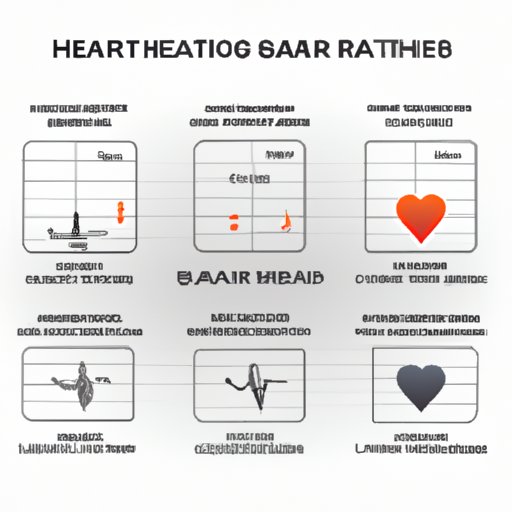Introduction
Your resting heart rate (RHR) is an important indicator of your overall health and fitness level. It measures the number of times your heart beats per minute while at rest and can provide insight into your cardiovascular health. Understanding what is considered a healthy resting heart rate and how to measure and track it can help you maintain your physical and mental wellbeing.
Exploring the Basics of a Healthy Resting Heart Rate
When it comes to measuring your resting heart rate, it’s important to understand what is considered a normal range. According to the American Heart Association (AHA), a normal resting heart rate for adults typically ranges from 60 to 100 beats per minute (bpm). A lower RHR is generally better as this indicates that your heart doesn’t have to work as hard to pump blood throughout your body.
It’s also important to note that your RHR can change with age. For example, a study by the National Institutes of Health found that older adults tend to have higher RHR than younger adults. The study also found that women tend to have a slightly lower RHR than men.

Understanding What a Normal RHR Means for Your Health
Having a healthy RHR can provide numerous benefits for your health. According to the AHA, a lower RHR can indicate that you are physically fit and have a healthy heart. Conversely, a high RHR can indicate that your heart is having to work harder than normal to pump blood throughout your body.
Furthermore, having a low RHR can also reduce your risk of developing certain heart-related conditions such as coronary artery disease, stroke, and heart failure. A study by the Medical University of Graz found that those with a lower RHR had a significantly lower risk of developing these conditions than those with a higher RHR.

How to Measure and Track Your RHR
Measuring and tracking your RHR is relatively easy and can be done in the comfort of your own home. The most common way to measure your RHR is by taking your pulse. To do this, simply place your index and middle fingers on the inside of your wrist, just below your thumb. Count the number of times your heart beats in 10 seconds and then multiply that number by 6 to get your RHR in bpm.
If you prefer, there are also digital devices available that can measure your RHR. These devices use sensors to detect electrical signals from your heart and can be used to accurately measure your RHR.
Once you’ve measured your RHR, it’s important to keep track of it over time. This will help you identify any changes in your RHR that may require further investigation. There are several apps available that allow you to easily record and track your RHR.

Tips for Improving Your RHR
If you’re looking to improve your RHR, there are several steps you can take. Eating a balanced diet, getting regular exercise, and avoiding stress are all good ways to keep your RHR within a healthy range. Additionally, quitting smoking, reducing your alcohol consumption, and managing your weight can all help to improve your RHR.
Conclusion
Your resting heart rate is an important indicator of your overall health and wellbeing. By understanding what is considered a healthy resting heart rate and how to measure and track it, you can ensure that your RHR remains within a normal range. Eating a balanced diet, getting regular exercise, and avoiding stress can all help to improve your RHR and reduce your risk of developing certain heart-related conditions.
(Note: Is this article not meeting your expectations? Do you have knowledge or insights to share? Unlock new opportunities and expand your reach by joining our authors team. Click Registration to join us and share your expertise with our readers.)
